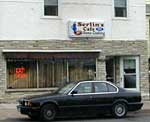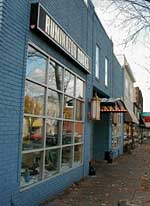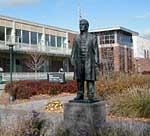St. Paul candidates reflect neighborhoods
By William Wilcoxen
Minnesota Public Radio
October 24, 2001
St. Paul is often called a city of neighborhoods. The candidates in this year's mayoral race represent parts of the city that illustrate the strength and range of its neighborhoods. Randy Kellyrepresents the East Side in the state Senate. City Council member Jay Benanav represents the fourth ward, an area that includes Merriam Park and other western neighborhoods.
| |
|
|
|
||
Kathy Lantry is a fifth generation East Sider. Her mother represented the area in the state Legislature - Lantry sits on the St. Paul City Council. If she were to describe the people of the area in a word, it would be parochial. East Siders, she says, tend to stick close to home.
"For a lot of us the big joke down here is that I think that the city ends at Lexington. Because there's no reason for me to go west."
Lexington Parkway is about halfway between St. Paul's downtown and its western boundary. But it may as well be a suburb to those east side residents who find their day-to-day needs met in the area tucked between Interstate 35E and the Maplewood city limit. Along Payne Ave., for example, sit small diners like Serlin's Cafe, where there still hangs a painting of the 1980 Olympic hockey team coached by East Sider Herb Brooks.
Serlin's functions as a neighborhood gathering spot, where old-timers like Vic Tedesco can keep up with old acquaintances. Now in his 80s, Tedesco has seen his boyhood street renamed in his honor to mark his contributions to the East Side. The former city council member is boosting Randy Kelly's mayoral campaign. Tedesco says their part of town has long been an area where hard-working immigrant families found blue collar jobs at the local brewery or factory.
| |
|
|
|
||
"When I was growing up in the neighborhood, most of the old Italians were working on the railroad, and working hard. Those houses down there - they weren't mansions but they were always clean and they had gardens in the back. My parents always had a big garden," Tedesco recalls.
The East Side is still home to many working class people and immigrants, who are more likely to come from Southeast Asia or Africa these days. The area also continues to inspire pride among people like Beverly Oberg, a cafe lunch customer
"I have a lot of pride in being from this part of town and I'm looking to stay here even in my senior years. I don't plan on leaving the East Side,." says Oberg.
| |
|
|
|
||
Emotional ties binding citizens to their neighborhoods are common in urban areas. In the western part of St. Paul, many residents feel an attachment to Grand Ave., a busy commercial and residential strip that provides a counterpart to the mansions and churches of historic Summit Ave. one block away.
Succesful Grand Ave. merchants include David Unowsky of Ruminator Books. Unowsky, who's been in business on the avenue for 31 years, says the feel of the Macalester-Groveland, Merriam Park, Highland Park end of town is influenced by the colleges located there.
"Macalester, St. Kate's, St. Thomas - I think those are large institutions that set a tone and set a culture for the neighborhood that's pretty important," Unowsky says. "I think it's fairly clear that politically it tends to be a more liberal part of town. The third and fourth wards have always elected Democrats - usually liberal Democrats."
Howard Orenstein joined the area's list of elected DFLers in 1986, when voters sent him to the state House of Representatives. Orenstein is no longer a legislator but still lives in the Mac-Groveland neighborhood, where household incomes and education levels are higher than in most St. Paul neighborhoods.
"It's a very stable part of town. Property values are stable or rising here, whereas in other parts of town, they've gone up and down over time."
| |
|
|
|
||
Orenstein says the colleges give the area a foundation that holds up well even in lean economic times. They also give the neighborhoods a youthful energy and a scholastic bent that attracts people like Karen Burr, a recent Macalester graduate who settled in the area and sometimes waits for the number 63 bus.
"It is a very intellectual area. I've definitely gotten into intellectual discussions at bus stops and in the grocery store. You just run into a lot of college grads, a lot of Mac grads, a lot of professors, a lot of students," says Burr.
Certainly, the mayoral candidates are attuned to the sensibilities of the neighborhoods that have elected them. But geography is not a foolproof barometer of how people will vote. In fact, Howard Orenstein of Mac-Groveland is backing Randy Kelly, who he says is equipped to make the tough decisions a recession might require.
Meanwhile, East Sider Kathy Lantry is co-chairing the Jay Benanav campaign. Lantry says after their election to the city council, she and Benanav gave one another reciprocal tours of their wards to see that the city does indeed exist on either side of Lexington. St. Paul voters will determine on November 6th whether Benanav or Kelly succeeds Norm Coleman, who is not seeking a third term as mayor.
More from MPR



